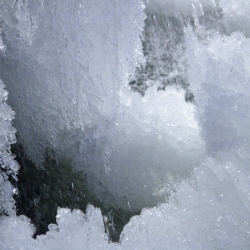
While most attention has been given to carbon dioxide, it isn’t the only greenhouse gas that scientists are worried about. Carbon dioxide is the most important human-emitted greenhouse gas, but methane has also increased in the atmosphere and it adds to our concerns.
Molecule for molecule, methane traps more heat than carbon dioxide; approximately 30 times more, depending on the time frame under consideration. However, because methane is present in much smaller concentrations (compared to carbon dioxide), its aggregate effect is less.
But what has scientists focusing on methane is the way it is released into the atmosphere. Unlike carbon dioxide, which is emitted primarily through burning of fossil fuels, methane has a large natural emission component. This natural emission is from warming permafrost in the northern latitudes. Permafrost is permanently frozen ground. Much of the permafrost is undisturbed by bacterial decomposition.
As the Earth warms, and the Arctic warms especially fast, the permafrost melts and soil decomposition accelerates. Consequently, an initial warming leads to more emission, leading to more warming and more emission. It is a vicious cycle and there may be a tipping point where this self-reinforcing cycle takes over.
